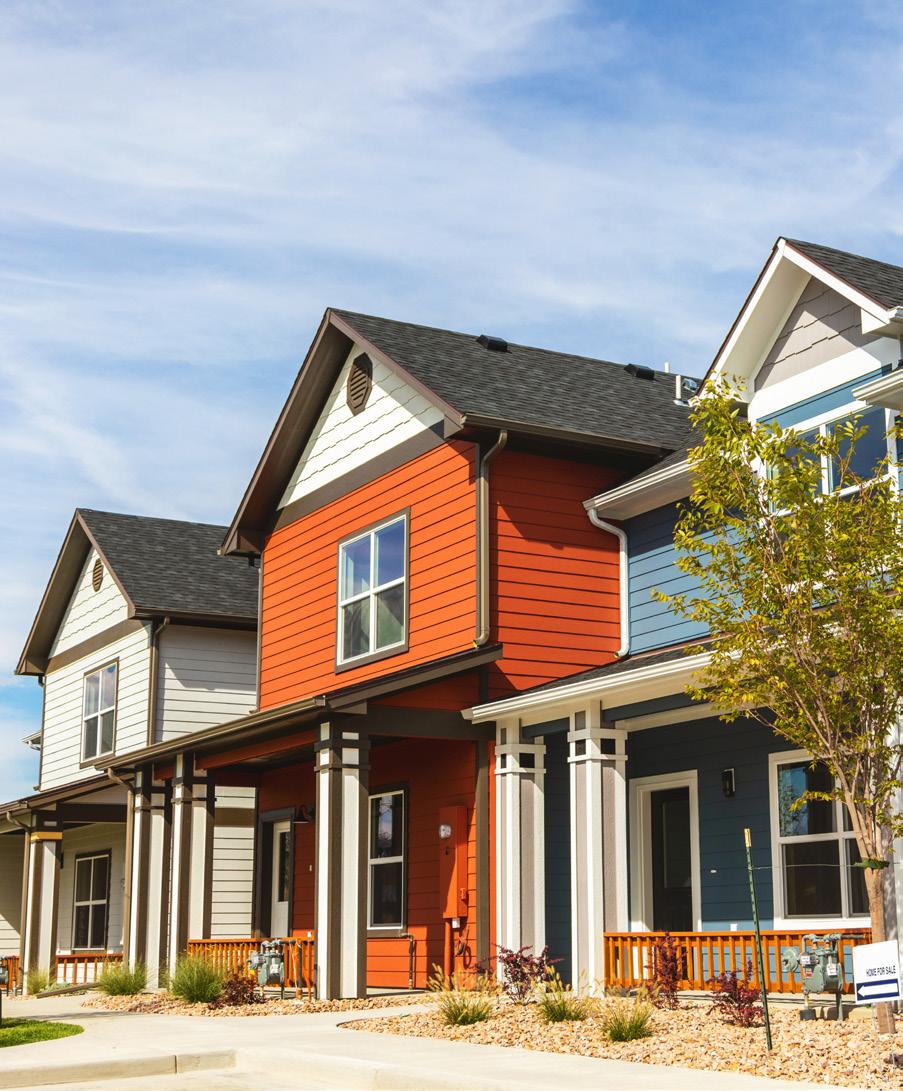
3 minute read
WHAT DO THE FINDINGS OF THE COMMON SENSE INSTITUTE HOUSING STUDY MEAN FOR LOCAL RESIDENTS?
by Christy Heitger-Ewing
In the last 15 years, a number of studies have aimed to evaluate the nationwide shortage of new construction. But how does that information translate to the local level? The Builders Association of Greater Indianapolis (BAGI) looked to the Indianapolis Metropolitan Area Housing Affordability Report to make that assessment.
“Having facts and figures and knowing what it means from a local level allows us to start making informed decisions around how to solve this problem,” says Steve Lains, CEO of BAGI.
In 2022, the Indianapolis Metro area had a housing deficit of between 18,852 - 61,238 homes. The housing supply is affected not just by the costs to build a home but is also greatly shaped by government regulation through local zoning.
“We cannot add to our housing stock unless we work with our local government to obtain approvals for attainable projects,” says Christian Rector, Vice President of Acquisition and Entitlement at Arbor Homes. He maintains that builders need to increase supply for all types of housing, ranging from multi-family rental units all the way up to high-end master planned developments.
“Builders have known for years that we were not keeping up with the demand for new housing,” says Rector. “In the decade coming out of the Great Recession, from 2010-2019, we built fewer homes than in any decade since 1950. Even accounting for the excess of the early 2000’s, population and demand has far outpaced supply.”
As Lains points out, the building industry isn’t playing the field of dreams.
“We don’t just build it and hope they will come,” says Lains. “We’re building because people are here with this need. Our hope is that this study starts to give everyone some real, true information about what that need is and where that demand is –because we’re not just building on speculation.”
Rector notes that without additional housing being built, housing at all price points will become more expensive. A shortage of homes will lead to not only increased home prices, but also accelerated rent increases for those that do not own. Listings on the existing market will likely remain low given how many people purchased or refinanced at historically low rates.
“The costs of leaving behind a mortgage rate that is less than 3% alters the math of downsizing or ‘moving up’ significantly,” says Rector. “Without new homes being built, finding a new home or a first home will be a challenge.”
Even after the “COVID boom” in remodeling, Rector expects to see the market stay strong for those projects. If you’re locked into a mortgage payment of less than 3% and continue to build equity as home prices appreciate, it will likely be much cheaper to use that equity to finance an addition or remodeling project than to assume a market rate mortgage on a new home, even if you are looking to downsize. This will continue to keep listings on the existing market extremely tight, further stressing the need for an increased supply of new homes.
A recent Wall Street Journal article mentioned the rebound in the new construction market and cited the Commerce Department and National Association of Realtors in saying 35% of single-family home sales in December were new construction compared to a historical average of 10-20%.
“That’s a massive jump, that I expect to be sustained,” says Rector.
Prices have steadily been increasing for years due to low supply. When interest rates fell as low as they did in 2020 through early 2022, it helped address the affordability challenges, further increasing demand beyond supply. On the new construction side, zoning regulations have increased lot sizes and architectural standards, increasing the costs to build. Trades are desperate for skilled labor and have seen their costs rise rapidly as a result.
“It’s going to take innovative solutions to bring the cost of housing back down,” says Rector.
Going forward, builders have to work with local governments to increase supply for all types of housing.
“This will have to include creative and innovative ideas to address the affordability gap that has emerged as the costs of development and construction have increased so rapidly,” says Rector.
For more information or to join the conversation on achievable housing, visit buildindianaroots.com
In Tiers! A layered island provides different levels for different tasks. Prep on one; sit and dine at another.










